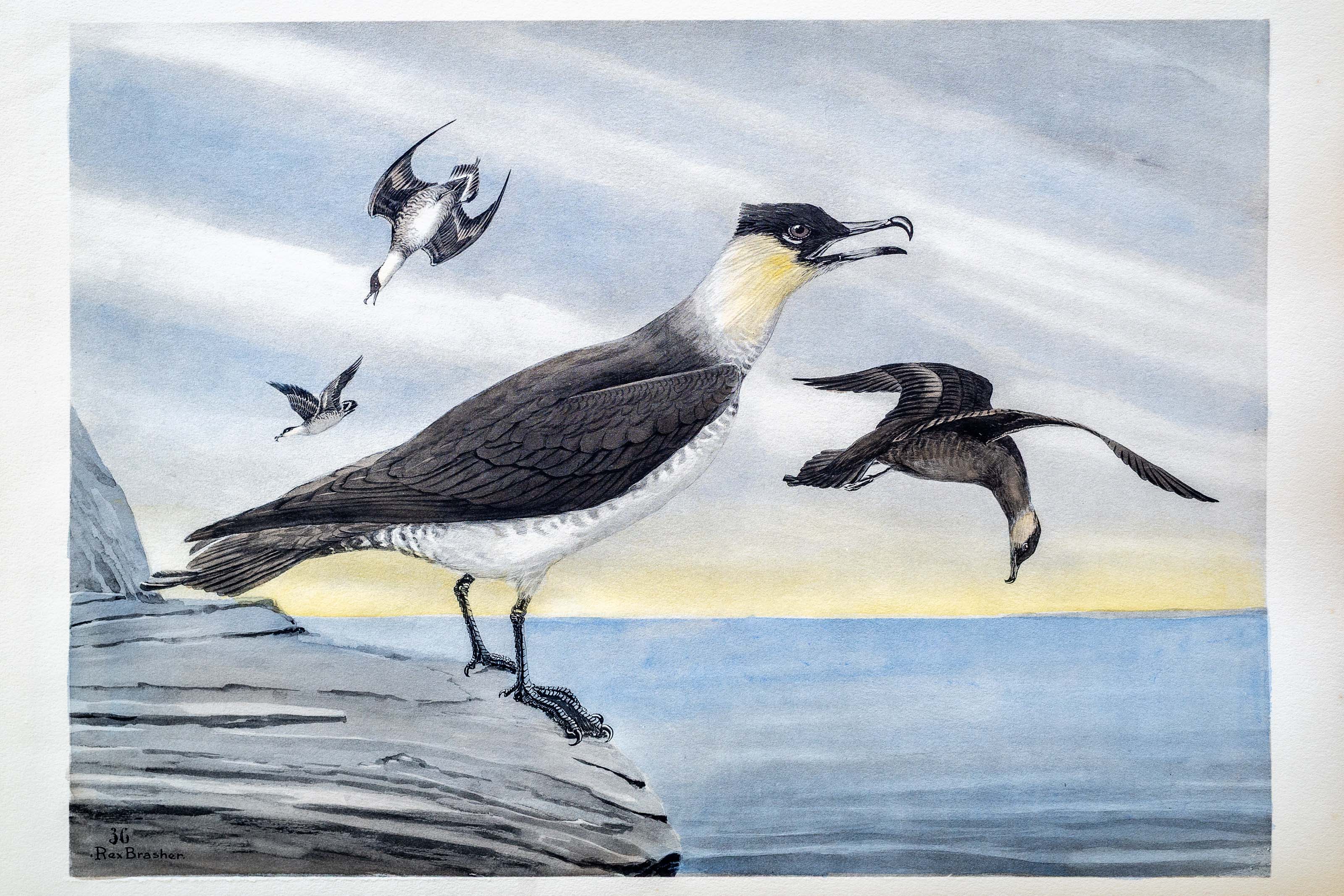
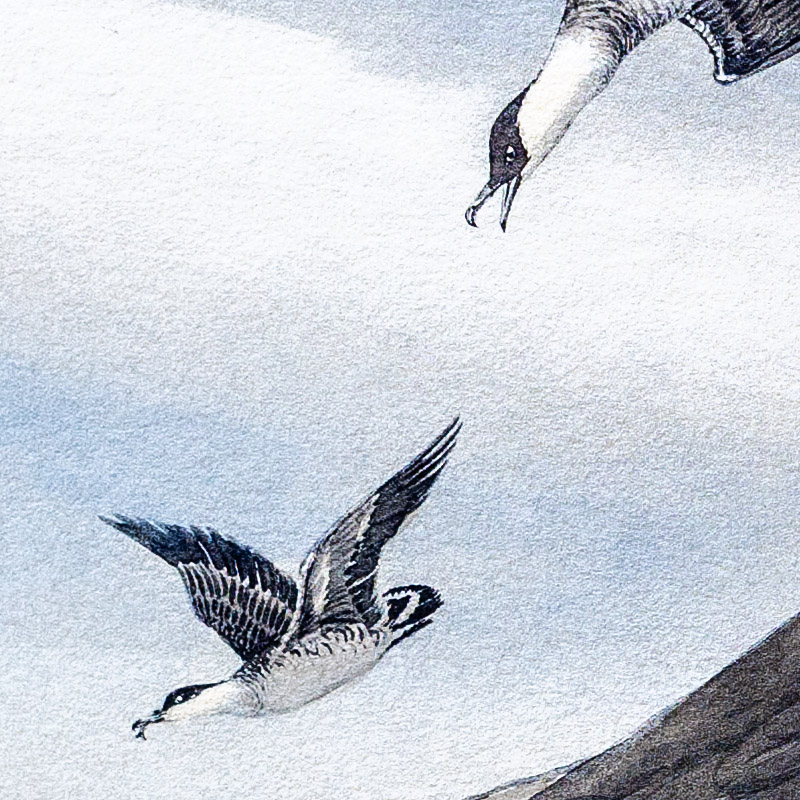
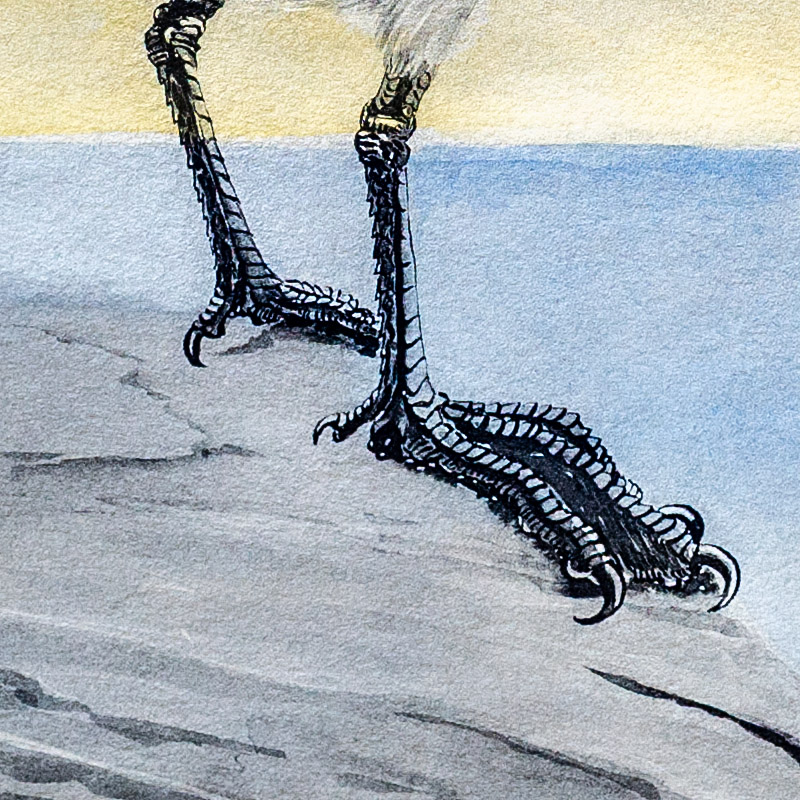
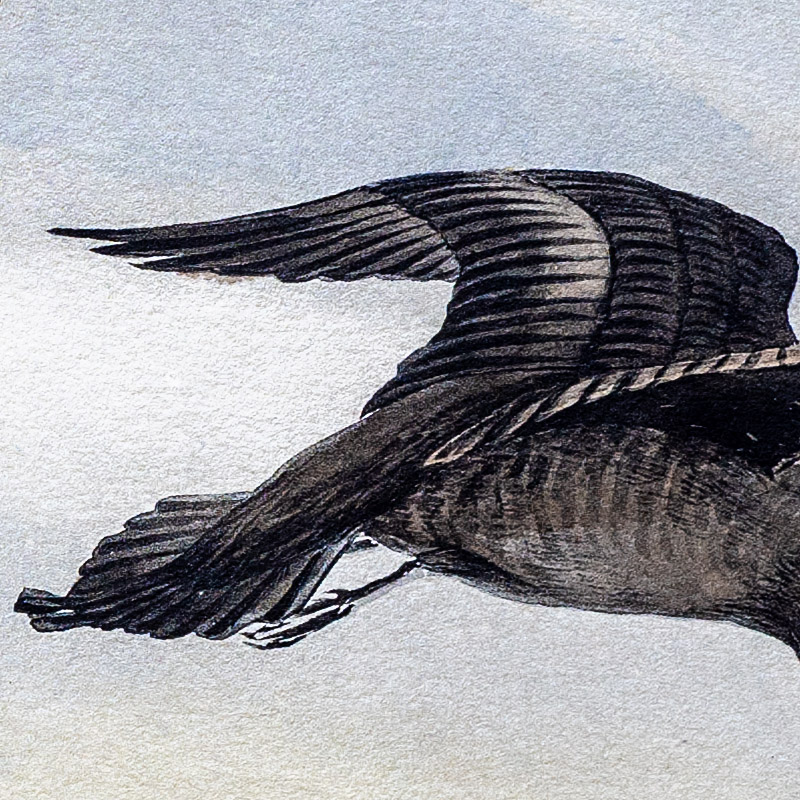
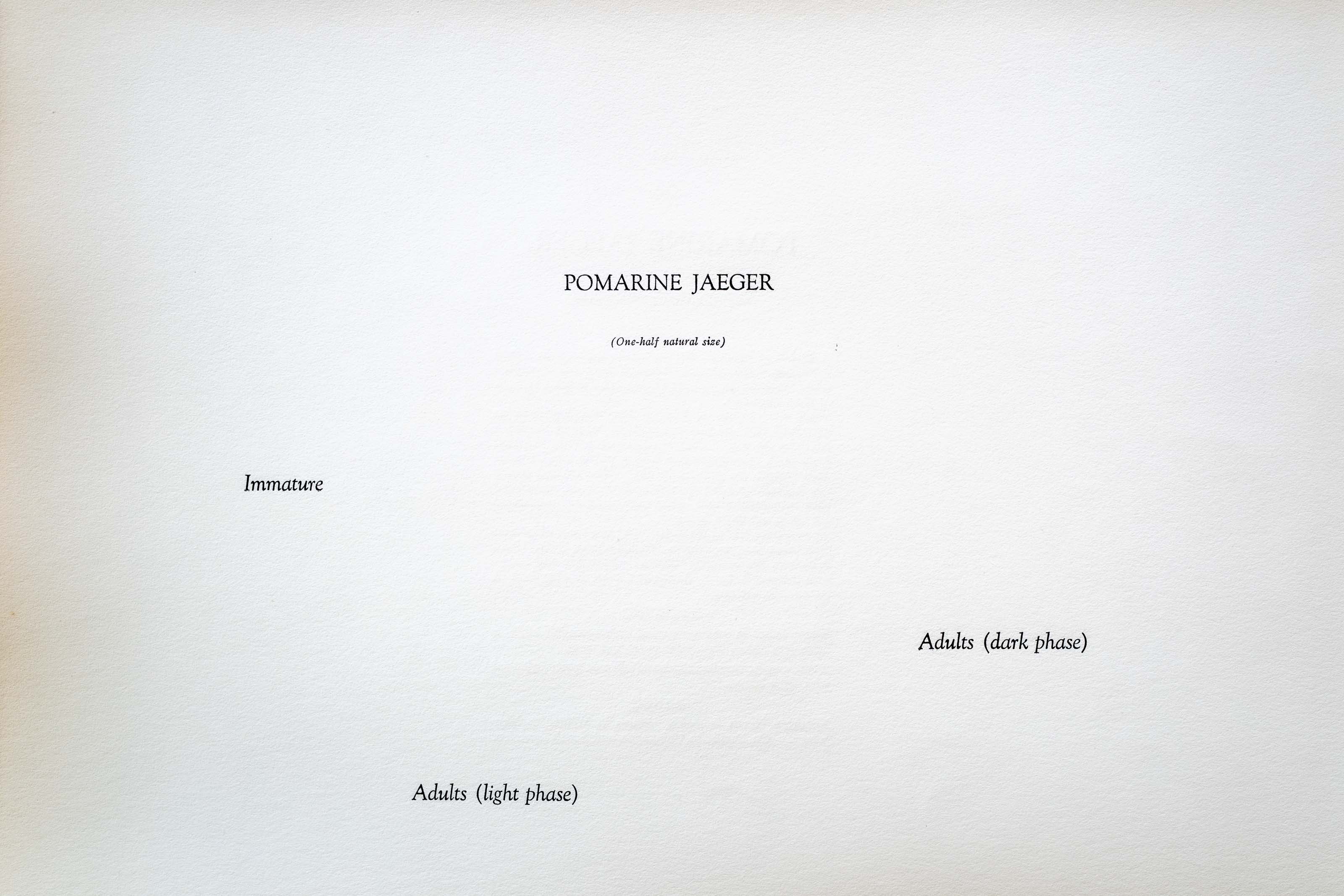
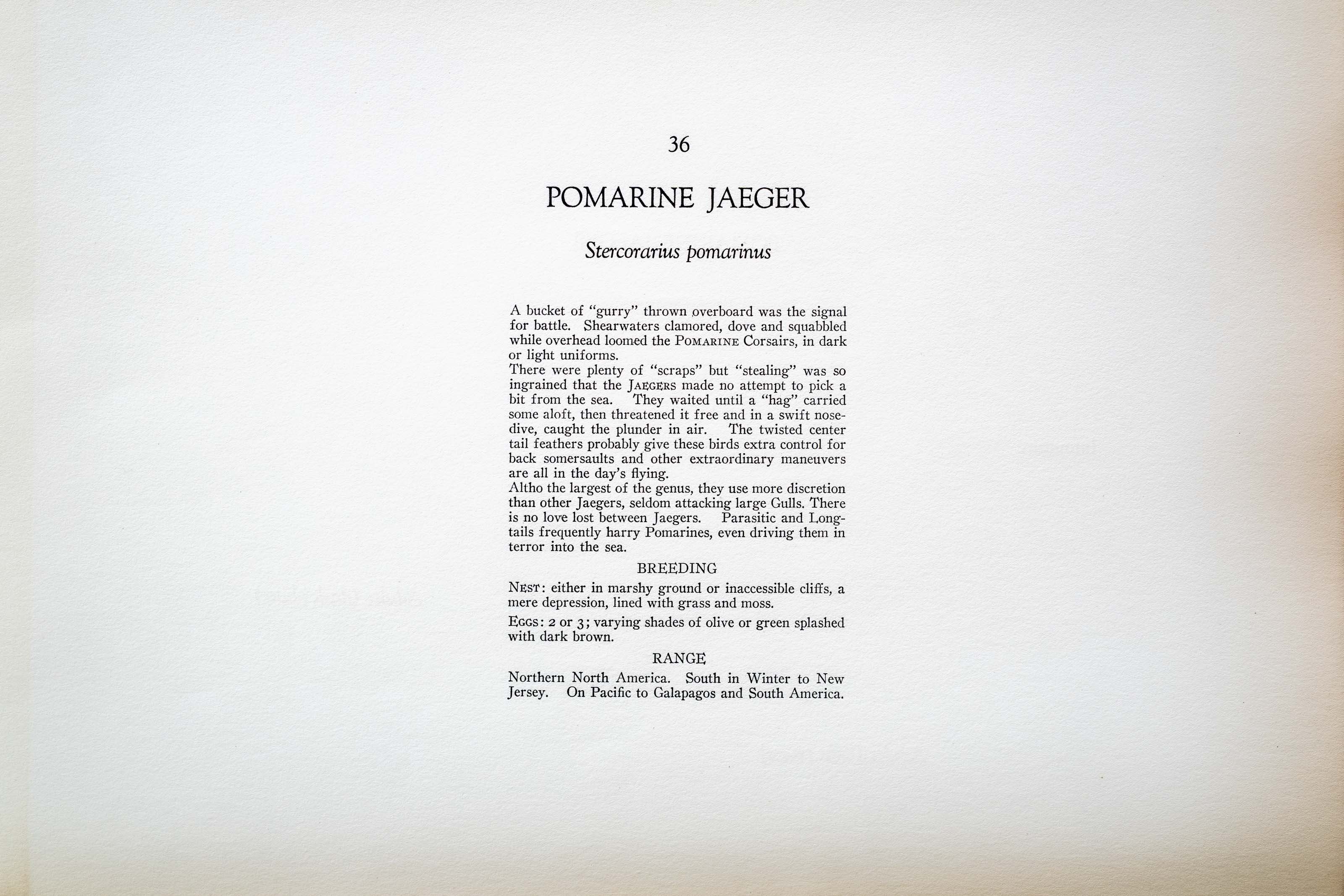

Unknown
1932
1
36
A team of dedicated board members, volunteers, and student interns has published every page in Volume 9. This volume includes 360 images of paintings and lyrical descriptions of birds, now available online for everyone to enjoy anywhere in the world. This is a monumental task. Each volume requires approximately 400 hours to photograph, edit, transcribe, catalog, and publish online. We need your support to complete this work.
If you're tech-savvy, have a good eye, are meticulous with details, and love structured data, please consider volunteering by emailing us at hello@rexbrasher.org.
We encourage all bird lovers and supporters to consider a monetary donation to support our mission to make Rex's work available for everyone. You can provide a one-time or recurring donation online.
A bucket of "gurry" thrown overboard was the signal for battle. Shearwaters clamored, dove and squabbled while overhead loomed the POMARINE Corsairs, in dark or light uniforms.
There were plenty of "scraps" but "stealing" was so ingrained that the JAEGERs made no attempt to pick a bit from the sea. They waited until a "hag" carried some aloft, then threatened it free and in a swift nosedive, caught the plunder in air. The twisted center tail feathers probably give these birds extra control for back somersaults and other extraordinary maneuvers are all in the day's flying.
Altho the largest of the genus, they use more discretion than other Jaegers, seldom attacking large Gulls. There is no love lost between Jaegers. Parasitic and Longtails frequently harry Pomarines, even driving them in terror into the sea.
NEST: either in marshy ground or inaccessible cliffs, a mere depression, lined with grass and moss.
EGGS: 2 or 3; varying shades of olive or green splashed with dark brown.
Northern North America. South in Winter to New Jersey. On Pacific to Galapagos and South America.